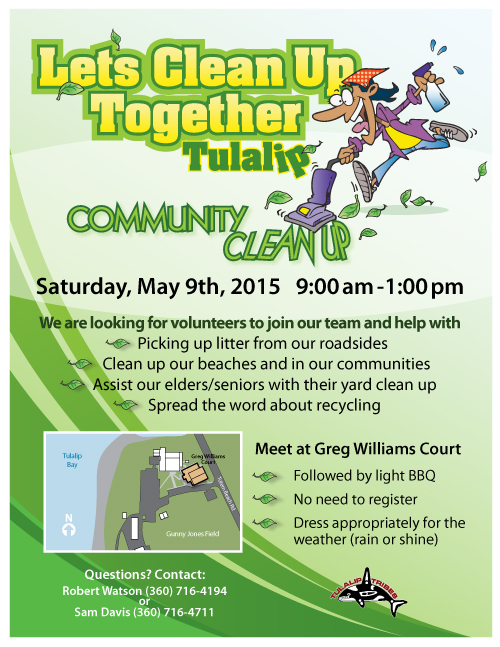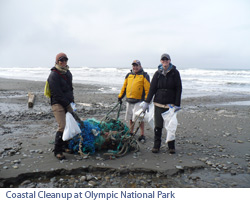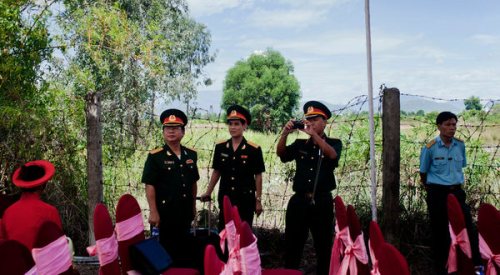Tag: clean up
Seattle Area Leaders Announce Plans To Merge Duwamish River Clean Up Efforts
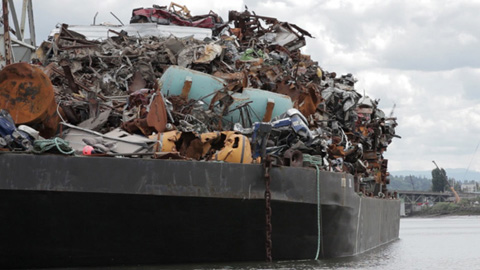
By Kim Malcolm, KUOW
SEATTLE — King County Executive Dow Constantine and Seattle Mayor Ed Murray announced plans Monday to combine efforts to clean up of the Duwamish and Green River watershed.
The strategy calls for coordinating the work of governments, non-profits and businesses already involved in the clean-up.
Constantine said bringing all the players together will improve the chances that the cleanup will work, permanently.
“We can begin to get more value for each dollar, to get more clean up, to get better environmental outcomes, and economic outcomes,” he said.
No new money was announced with the new plan, although officials said it will build upon 524-million dollars already committed by the City of Seattle and King County.
The watershed stretches 93 miles, from the Cascade Mountains to Elliott Bay in downtown Seattle. The Duwamish River flows through some of the most industrialized areas of South Seattle. It was declared a superfund site by the Environmental Protection Agency in 2001.
This was first reported for KUOW.
M’ville hires consultant to clean waterfront, help decide its future
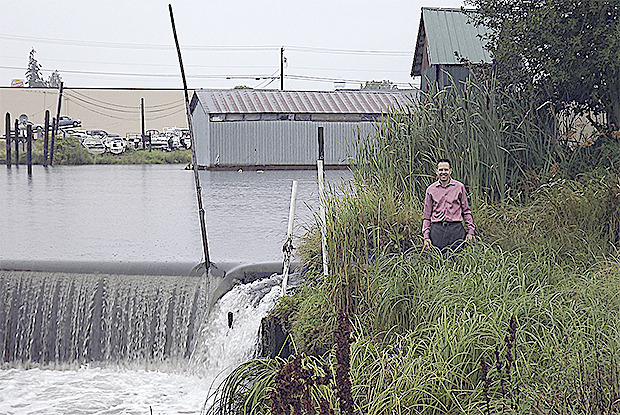
— image credit: Steve Powell
By Steve Powell, Marysville Globe
MARYSVILLE – Imagine the city’s waterfront filled with classy restaurants, a boardwalk and boutiques. Or how about condominiums and a casino? Wouldn’t a park with a stage for concerts and plays be nice?
What, you didn’t even know Marysville has a waterfront? It doesn’t look like much now, but city officials hope it will be something special in the future.
Marysville Mayor Jon Nehring said it’s part of the Downtown Revitalization vision, which includes the recently completed and widely popular Spray Park.
“We want a vibrant downtown that’s generating income and where everybody has jobs,” Nehring said, adding the goal is to have private enterprise build up the waterfront.
The downtown master plan calls for a waterfront trail and mixed use of business and living space on the property south of Penny’s.
Four years ago the city bought the former Ed and Susan Geddes five-acre marina at 1326 1st St. for $1.9 million. It took four years to decide on a price, as the Geddeses filed suit against the city due to surface water flowing into the marina. Bill Geddes had owned the property in the 1930s as a retention pond for a lumber mill.
The city has been applying for grants to clean up the site for years.
The city was awarded a $200,000 hazardous substances cleanup Brownsfield grant from the Environmental Protection Agency Oct. 1 of last year. A month later it received an Integrated Planning Grant from the state Department of Ecology for a similar amount. It has hired Maul Foster Alongi Consultants for $304,000 for a contract that runs from July 15, 2014 to Dec. 31, 2017.
Past activities at the location, including painting, boat sanding and fuel and oil storage and handling, likely contaminated the site with arsenic, cadmium and polycyclic aromatic hydrocarbons. In addition, stormwater discharge from the adjacent mill site has likely caused some of the contamination.
The property was historically used as a marina, but the city has stopped renewing leases and has removed several boat houses, the grant says.
Nehring said the city knew the site was contaminated when it bought it, and it also knew grants would be needed to move on. The state money will determine chemicals in the soils and the method of cleanup. The money from the feds will help pay for the actual cleanup.
“We need more money. This will just get us started,” Nehring said.
He said how much the cleanup will cost will be determined by what goes there. Some development needs would have to have more cleanup than others.
Nehring said the city spent about $200,000 in federal money to clean up the area just to the East a couple years ago, but that was “minor” compared with Geddes Marina, said Gloria Hirashima, Community Development director.
Hirashima said no matter what goes there drinking water will be pumped in and people will not want to be exposed to the contaminated soil. Across the street at the boat launch soil was cleaned to a point but then the site was capped and clean dirt put over it, similar to what is done to build over landfills.
A key to the success of the area will be finding a use that provides “constant activity.” Hirashima said that is lacking at the boat launch, and that is why homeless have inhabited that area. She said if Geddes Marina becomes more like the skate park it will be successful.
“There used to be a bad crowd there, but the families reclaimed that park,” she said. “We need active usage at a daily rate.”
The consultant will work in two phases. The first to analyze the site, the second to design remedial action and oversight.
The first phase includes cleanup options, community involvement, developer options and market analysis. Cost is $220,000. The second phase includes permitting and working with agencies, the cleanup, oversight and the final report. Cost is $84,000.
Final approval would come from the Department of Ecology.
PHASE ONE – Site analysis
• Presentation to the City Council and Open House for residents.
• Analyze cleanup costs to evaluate potential developer interest and flag areas of risk for the city.
• Analyze physical condition of land, including stormwater, hydrogeological and geotechnical.
• Analyze federal, state, and local land-use and environmental regulations.
• Study local and regional real estate market to look at potential marketing opportunities. That will include cost estimates, achievable rents as well as vacancy rates for competing development sites. The market analysis will ensure that the development vision has a realistic opportunity for implementation.
PHASE TWO – remedial action and oversight
• Work with federal, state, local governments and Tulalip Tribes to obtain required approval and permits.
• Cleanup plan to include approach, sampling strategy, cleanup levels and post-cleanup monitoring.
• Will develop construction bid package that will allow the city to procure a contractor to complete the remedial action.
• Will provide field oversight associated with implementation of the remedial action.
What do you think should be done on the waterfront?
Coastal Clean Up 2014
Press Release: National Parks Conservation Association
 Join NPCA on April 19, 2014 as we partner with other environmental groups to remove debris from Washington beaches. Household plastics, garbage and other manmade debris are polluting our ocean, killing our marine wildlife, and spoiling our beaches and collectively we can do something about it!
Join NPCA on April 19, 2014 as we partner with other environmental groups to remove debris from Washington beaches. Household plastics, garbage and other manmade debris are polluting our ocean, killing our marine wildlife, and spoiling our beaches and collectively we can do something about it!
This is your opportunity to be a part of the largest coastal cleanup event of the year. Last year a combined 1,000 volunteers removed over 15 tons of oceanic garbage!
We will meet at the Kalaloch Campground Saturday morning and carpool to South Beach for coastal debris removal. Olympic National Park is providing free camping at Kalaloch Campground both Friday and Saturday evenings. The event organizers, CoastSavers, will host a barbeque cookout at the campground Saturday afternoon. We encourage everyone to stay and explore the breathtaking coastlines and rainforests found in this area.
Event Details
WHAT: Washington Coastal Clean-Up 2013 hosted by CoastSavers.
WHEN: The clean-up is Saturday, April 19 from 9 a.m. to 3 p.m. FREE camping will be available on Friday, April 18 and Saturday, April 19!
WHERE: Kalaloch Beach, Olympic National Park. Meet at the Kalaloch Campground in the main parking lot.
WHO: Anyone interested–-families welcome!
RSVP: Please RSVP to Shannon Brundle, sbrundle@npca.org or 206.903.1444 ext. 704, by Monday, April 14.
OTHER INFO: Remember to bring your work gloves and camping gear if you plan to camp overnight. Food is provided on Saturday at the cookout; please bring your own food and water for the rest of your stay. Also, the free camping is limited and available on a first come, first served basis– plan ahead to make sure you have a site.
4 Decades on, US starts cleanup of Agent Orange in Vietnam
Forty years after the United States stopped spraying herbicides in the jungles of Southeast Asia in the hopes of denying cover to Vietcong fighters and North Vietnamese troops, an air base here is one of about two dozen former American sites that remain polluted with an especially toxic strain of dioxin, the chemical contaminant in Agent Orange that has been linked to cancers, birth defects and other diseases.
On Thursday, after years of rebuffing Vietnamese requests for assistance in a cleanup, the United States inaugurated its first major effort to address the environmental effects of the long war.
“This morning we celebrate a milestone in our bilateral relationship,” David B. Shear, the American ambassador to Vietnam, said at a ceremony attended by senior officers of the Vietnamese military. “We’re cleaning up this mess.”
The program, which is expected to cost $43 million and take four years, was officially welcomed with smiles and handshakes at the ceremony. But bitterness remains here. Agent Orange is mentioned often in the news media, and victims are commemorated annually on Aug. 10, the day in 1961 when American forces first tested spraying it in Vietnam. The government objected to Olympics sponsorship this year by Dow Chemical, a leading producer of Agent Orange during the war. Many here have not hesitated to call the American program too little — it addresses only the one site — and very late.
“It’s a big step,” said Ngo Quang Xuan, a former Vietnamese ambassador to the United Nations. “But in the eyes of those who suffered the consequences, it’s not enough.”
Over a decade of war, the United States sprayed about 20 million gallons of Agent Orange and other herbicides in Vietnam, Cambodia and Laos, halting only after scientists commissioned by the Agriculture Department issued a report expressing concerns that dioxin showed “a significant potential to increase birth defects.” By the time the spraying stopped, Agent Orange and other herbicides had destroyed 2 million hectares, or 5.5 million acres, of forest and cropland, an area roughly the size of New Jersey.
Nguyen Van Rinh, a retired lieutenant general who is now the chairman of the Vietnam Association for Victims of Agent Orange/Dioxin, has vivid memories of hearing American aircraft above the jungles of southern Vietnam and seeing Agent Orange raining down in sheets on him and his troops. Plants and animals exposed to the defoliant were dead within days. Many of his troops later suffered illnesses that he suspects were linked to the repeated exposure to Agent Orange, used in concentrations 20 to 55 times that of normal agricultural use.
“I would like to have one message sent to the American people,” Mr. Rinh said in his office, where a large bust of Ho Chi Minh, the wartime leader and icon, stared down from a shelf behind his desk. “The plight of Agent Orange victims continues. I think the relationship would rise up to new heights if the American government took responsibility and helped their victims and address the consequences.”
Those who have worked on the issue say the American government has been slow to address the issue in part because of concerns about liability. It took years for American soldiers who sprayed the chemicals to secure settlements from the chemical companies that produced them. The United States government, which also lagged in acknowledging the problem, has spent billions of dollars on disability payments and health care for American soldiers who came into contact with Agent Orange.
Mr. Shear, the American ambassador, sidestepped a reporter’s question after the ceremony about whether the United States would take responsibility for the environmental and health effects of Agent Orange.
“There is a disconnect between what America has done for its soldiers and what America has done for Vietnam,” said Charles Bailey, the director of the Agent Orange in Vietnam Program, an effort by the Aspen Institute, a nongovernmental organization based in Washington, to reach common ground between the United States and Vietnam on the issue. “I’m sometimes glad I’m not a U.S. diplomat in trying to square that circle.”
A class-action case against chemical companies filed in the United States on behalf of millions of Vietnamese was dismissed in 2005 on the grounds that supplying the defoliant did not amount to a war crime and that the Vietnamese plaintiffs had not established a clear causal effect between exposure to Agent Orange and their health problems. The United States government is rolling out a modest $11.4 million program to help people with disabilities in Vietnam, but it is not explicitly linked to Agent Orange. The oft-repeated American formulation is “assistance regardless of cause.”
When environmental factors are linked to disease, proof positive is sometimes hard to determine. American military studies have outlined connections between Agent Orange and myriad ailments, while Dow Chemical maintains that the “very substantial body of human evidence on Agent Orange establishes that veterans’ illnesses are not caused by Agent Orange.”
In Vietnam, there are many cases in which links to Agent Orange appear striking.
Nguyen Van Dung, 42, moved to Da Nang in 1996 with his wife and newborn daughter and worked at the former American base, wading through the knee-deep mud of drainage ditches and dredging them with a shovel. During the first 10 years, he, like other employees, harvested fish and eels from the large ponds and canals on the air base grounds, taking them home almost daily. Studies later showed high concentrations of dioxin in the fat tissue and organs of the fish.
The couple’s first daughter is now at the top of her class, but their second child, also a girl, was born in 2000 with a rare blood disease. She died at 7.
Their son Tu was born in 2008, and he was quickly found to have the same blood condition. With regular transfusions, he has defied his doctor’s prediction that he would not live past 3, but he is nearly blind, with bulging eyes that roll wildly, and he speaks in high-pitched tones that only his parents can understand. His chest cavity is so weak that he cannot breathe if he lies on his stomach.
What caused the birth defects, and who is to blame? Detailed medical tests are out of the question for Tu’s parents, whose combined monthly income is the equivalent of $350, much of which goes to medical care.
But Luu Thi Thu, the boy’s mother, does not hesitate to assign blame.
“If there hadn’t been a war and Americans hadn’t sprayed dioxin and chemicals into this area, we wouldn’t be suffering these consequences,” she said.
“What happened to my son is already done, and nothing can change that,” she said. “The American and Vietnamese governments need to clean up the Da Nang airport so that the next generation will not be affected.”
Le Ke Son, a doctor and the most senior Vietnamese official responsible for the government’s programs related to Agent Orange and other chemicals used during the war, said the debates should take a back seat to aid. “We spend a lot of time arguing about the reason why people are disabled,” he said. “One way or another they are victims and suffered from the legacy of the war. We should do something for them.”

